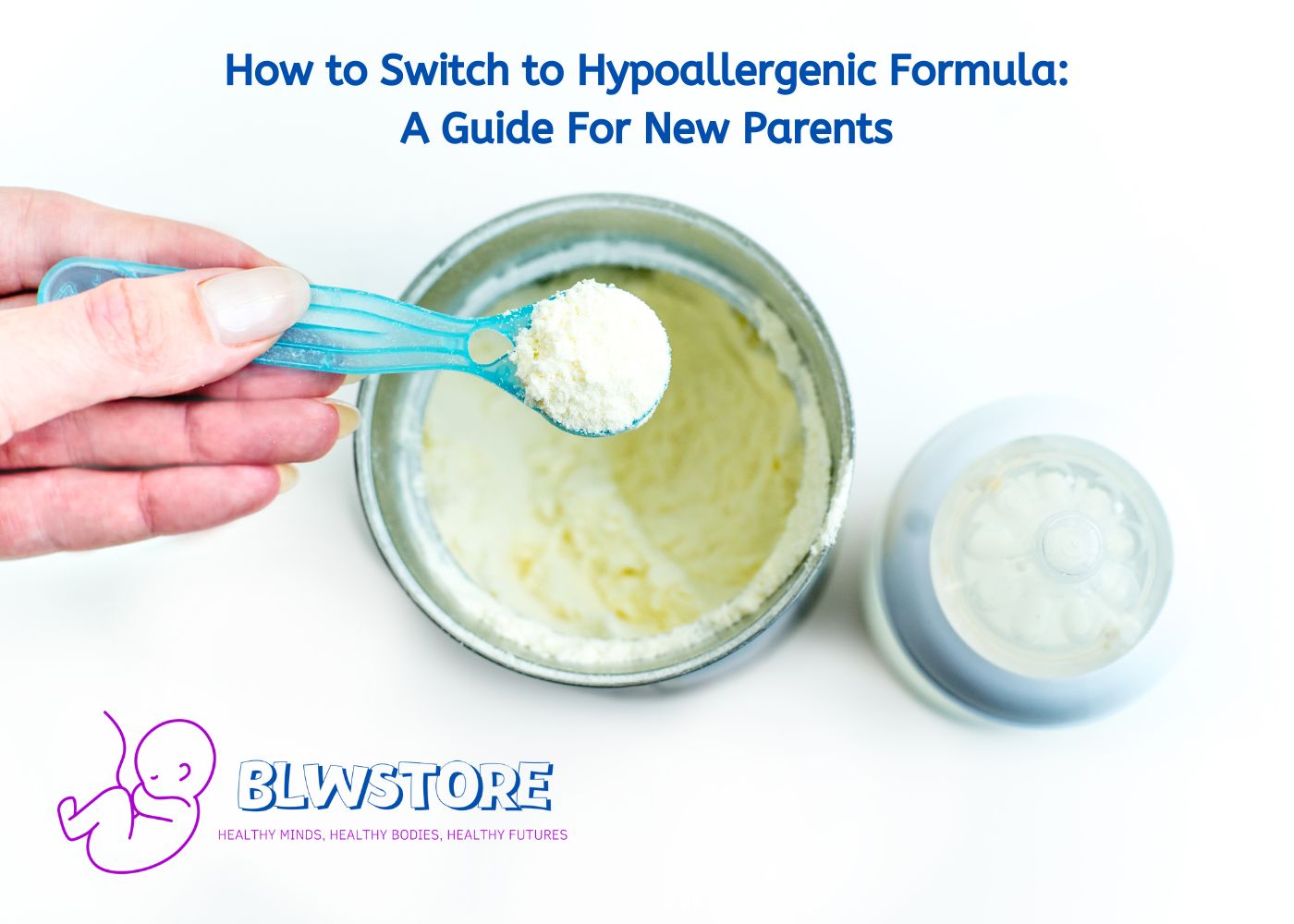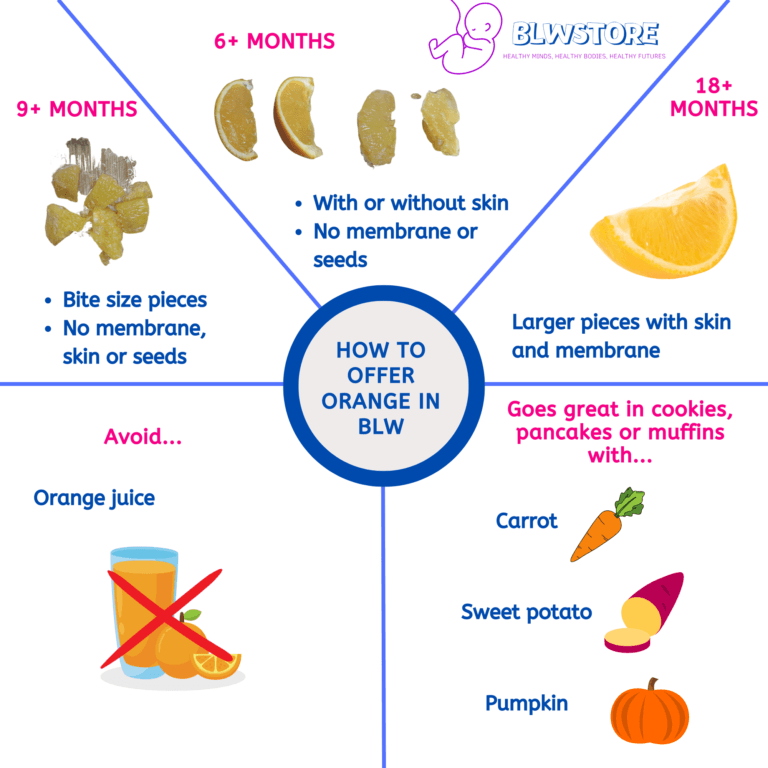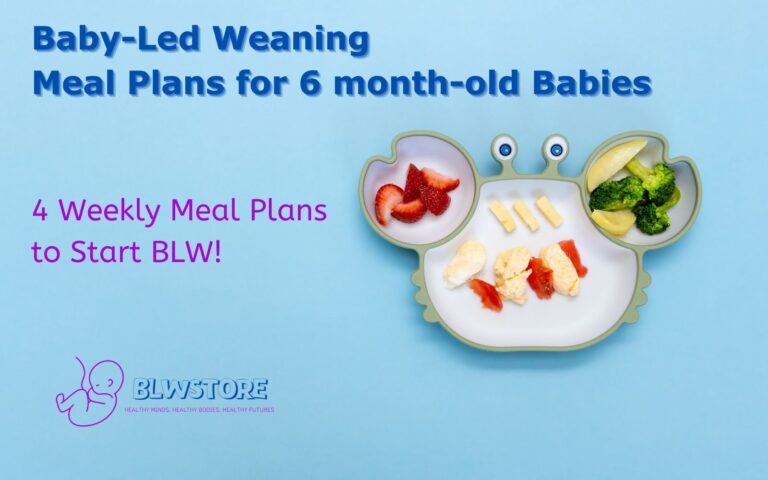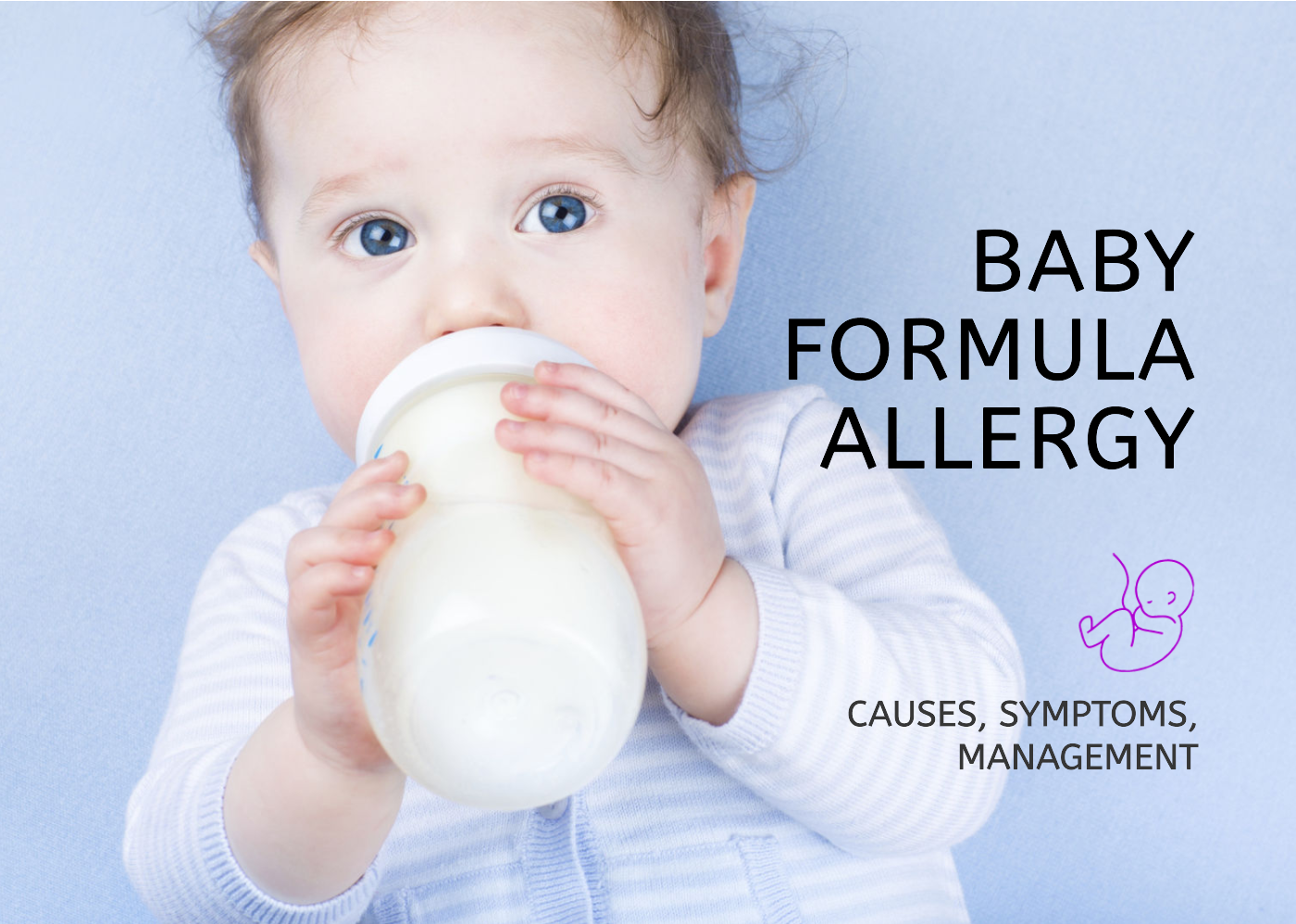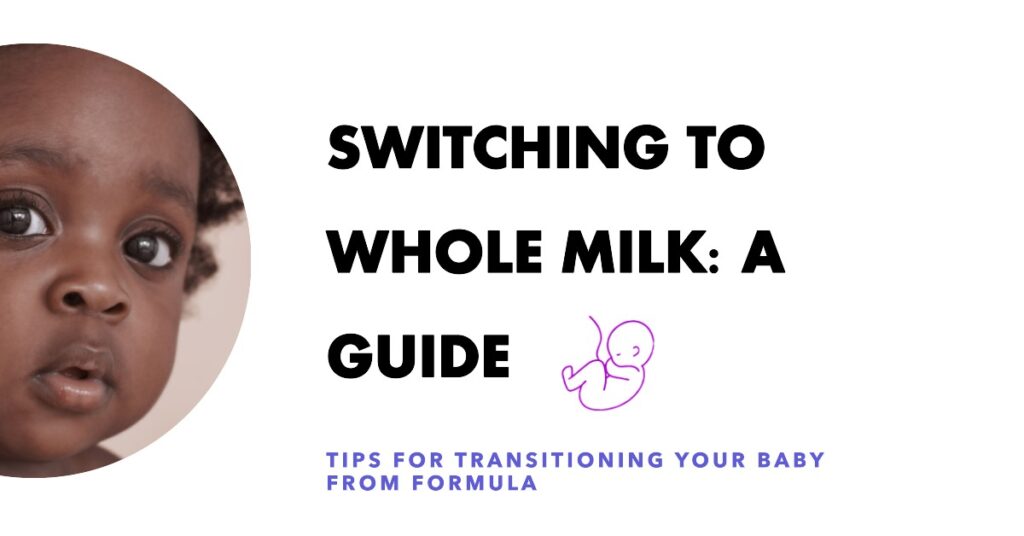
Key Takeaways
Start The Milk Transition at 12 Months ?: Wait until your child is 12 months old before introducing them to whole cow’s milk. This gives their digestive system enough time to mature.
Mix It Up! ?: Mix the formula with whole milk to ease the transition. It helps avoid potential digestive discomforts.
Sippy Cups & Open Cups Are Your Friends ?➡️?: Try using a sippy cup or an open cup during the transition to help your baby adapt to drinking from something other than a bottle.
Patience is Key ?: Don’t worry if your child doesn’t take whole milk immediately. It’s okay if it takes time, as with any transition in everyday care or solid foods introduction.
Start Small, Build Up ⬆️: Offer small quantities of whole milk initially due to its higher protein content. Whole milk should complement solid foods, which should be the main source of nutrients.
Monitor Your Child’s Reaction ?: Keep an eye out for any allergic reactions when you first introduce whole milk.
Consider Your Child’s Unique Needs ?: Some factors like adaptation to solid foods, allergies, intolerances, and specific health concerns can affect the transition timeline.
Nutritional Balance is Important ⚖️: Serve a balanced diet to ensure adequate nutrition during the transition. If whole milk isn’t a good fit, there are several alternatives to choose from.
Too Much Milk Can Be an Issue ??: After the transition, toddlers should have 2-3 servings of dairy daily. Overconsumption can interfere with iron absorption and lead to anemia.
Formula Post One-Year-Old Is Okay ?: You can continue to give formula to your child after they turn one. Some parents do this during the transitional period for added nutrition and taste familiarity.
As your baby grows, their nutritional needs change, and you’ll notice changes in their habits and preferences. One of the biggest transitions is switching from formula to whole milk.
The transition from formula to whole milk can be tricky initially, but it is an essential moment for you and your child.
We remember exactly when we started to make the switch, and everything went smoothly. This article aims to help you have the same experience as us.
Let’s get after it!
Our Short Answer
Pediatricians recommend waiting until your child is 12 months old before introducing them to whole cow’s milk. This gives their digestive system enough time to mature to tolerate the new food without any issues.
Mixing the formula with whole milk for a couple of days is also recommended to make the change as easy as possible. That way, you will avoid possible digestive discomforts.
Using a sippy cup as a transition between the bottle and an open cup is recommended; however, we did not follow that approach and switched to the open cup directly (we had to do some extra wiping, but it was worth it)
Don’t worry if they don’t take right away – like any other transition in everyday care or solid foods introduction – it may take some time getting used to!
IMPORTANT: because of the higher protein content of whole milk, you should only offer small quantities at the beginning, while solid foods are the main source of nutrients.
*Related: When can babies have dairy? | Toddler formula vs. Whole milk
When Can My Baby Switch from Formula to Whole Milk?
According to the American Academy of Pediatrics (AAP), infants should be exclusively breastfed or given infant formula until they reach 6 months of age.
Come 12 months, introducing whole cow’s milk is advisable.
However, remember that every child is unique and might not be ready for this transition precisely at 12 months – and that’s perfectly alright!
Step-by-Step Guide To Switch From Formula to Whole Milk
1. Start the transition process when your baby turns 12 months old.
2. Introduce small amounts of whole milk mixed with baby formula in your baby’s bottle.
3. Gradually increase the proportion of whole milk and reduce the formula over several weeks.
4. Monitor your infant for any allergic reactions during this period.
5. Once they’re comfortable with whole milk, start offering it using a sippy or open cup instead of a bottle.
6. Gradually replace all bottles with open cups while ensuring your child still takes in enough liquids.
Remember: Every child’s transition process differs so don’t worry if yours takes longer than others’. Patience is key!
What Factors Could Influence the Transition from Formula to Whole Milk?
Transitioning from formula to whole milk isn’t solely about age.
Here are some factors that may affect an individual child’s transition timeline:
Adaptation to solid foods: Some babies need more time on formula because they haven’t fully adjusted to solid foods.
Allergies and intolerances: If your child has a history of these, introducing whole milk must be done carefully, possibly after further testing.
Specific health concerns or dietary needs: If this applies to your child, consult with a pediatrician or lactation consultant before introducing whole milk.
Remember: Your child’s readiness for this important change matters more than following a rigid timeline.
How Does the Nutritional Content of Toddler Formula Compare to Whole Milk?
| Attribute | Toddler Formula | Whole Milk |
|---|---|---|
| Age Introduced | From 12 months | From 12 months |
| Protein Content | Lower (~1.8g per 100ml) | Higher (~3.5g per 100ml) |
| Carbs and Fats | ~8g carbs and 2.8g fat per 100ml, includes extra fatty acids | ~9.7g carbs and 3.5g fat per 100ml |
| Vitamins and Minerals | Fortified with various vitamins and minerals | Contains essential vitamins and minerals, may lack some supplements found in formulas |
| Omega-3 Fatty Acids | Present in some toddler formulas | Absent |
| Digestibility | Generally easier due to lower protein content or the addition of other types of carbs, some contain prebiotics | May be a bit more challenging due to higher protein content and possible lactose intolerance |
| Allergenic Potential | Some are processed to minimize allergenic potential, options for lactose intolerance or cow’s milk protein allergy | Intact proteins may trigger allergies in some babies |
| Cost | More expensive due to product development, fortification, packaging, and marketing | Less expensive, readily available |
As you can see, toddler formula can be an excellent substitute for whole milk, but it is unnecessary.
The only consideration with conventional milk is that it has more protein, which could be dangerous for your baby’s kidneys if consumed a lot.
How Can I Ensure Adequate Nutrition During My Baby’s Transition To Whole Milk?
Providing a balanced diet: Serve varied sources of proteins (meat, fish, tofu); carbohydrates (fruits, grains); healthy fats (avocados, olives); and fiber-rich vegetables.
Looking for alternate sources: If your child doesn’t drink cow’s milk but needs calcium, consider cheese or yogurt. Plant-based milk like almonds or oats are fortified with calcium and are great alternatives.
Gradually transitioning: Retain formula feeds alongside sippy cup trials to ensure familiarity.
What Alternatives Work for Children who Cannot Tolerate Whole Milk?
Lactose-Free Milk: Similar to cow’s milk but with broken down lactose for easier digestion.
Plant-Based Milks: Options like soy, almond, oat, rice, or coconut milk. Ensure they are fortified with calcium and vitamin D.
Goat’s Milk: Suitable for some children who can’t tolerate cow’s milk but not for those with a cow’s milk protein allergy.
Toddler Formulas: Formulas designed to cater to specific dietary needs such as lactose intolerance or milk protein allergies.
A2 Milk: May be easier to digest for some children who react to regular milk.
Could the Switch to Whole Milk Cause Constipation in My Baby?
A common concern for parents is whether transitioning from formula to whole milk might lead to constipation. This can happen with some kids, but it’s not a universal issue.
Some children find their stool regularity improves with whole milk.
If your child does experience discomfort or difficulty in passing stools consistently after the transition, try increasing their water intake and adding more fiber-rich foods like pears, prunes, and peas into their diet.
How Much Whole Milk Should My Toddler Be Drinking Each Day?
After the transition, experts, including the American Academy of Pediatrics (AAP), recommend that toddlers between 1-2 years should have 2-3 servings of dairy per day, with each serving approximately around 4 ounces.
This doesn’t just have to come through whole milk – cheese or yogurt can make up these servings too.
It’s also important not to overdo it on the milk front because excess consumption can interfere with iron absorption, potentially leading to anemia.
Can I Continue to Give Formula to My Child Post One-Year-Old Age?
Yes, you can! While transitioning them from breastmilk or formula is suggested after they turn one year old this doesn’t mean that formula has to vanish from their diet at once completely.
Some parents continue giving their toddler small doses of formula along with cow’s milk during the transitional period for added nutrition and taste familiarity.
We’re Maria and Alberto, a married couple and educators who are nutrition enthusiasts. Even before we had kids, we were already crazy about nutrition.
We’d read scientific articles, watch videos from nutritionists, and spend hours listening to nutrition podcasts.
Today, we continue doing this, but in a different way, as we’ve learned to sift through the noise and trends. Nutrition, like any other field of knowledge, the more you read and learn, the more you develop a comprehensive understanding of reality, and that’s what has happened to us.
Before having our first child, we focused on learning everything we could about child nutrition, using the same techniques we had already employed, backed by our extensive knowledge in nutrition.
Our mission is to help other parents with their children’s nutrition, to help them become the best versions of themselves.
If we are what we eat and drink, which is absolutely true, let’s do it right!



